Countries in Western Africa
How Many Nations in Western Africa
Located in west part of Africa, Western Africa is composed of 16 countries. Here is an alphabetical list of all countries in West Africa: Benin, Burkina Faso, Cape Verde, Côte d’Ivoire, Gambia, Ghana, Guinea, Guinea-Bissau, Liberia, Mali, Mauritania, Niger, Nigeria, Senegal, Sierra Leone, and Togo. Among them, two of which belong to the PALOP (Cape Verde and Guinea-Bissau):
1. Benin
Benin is a West African state that was formerly a French colony and hence French is the official language of the country. More than 10 million people live in the country and the country’s state is a republic.
 |
|
2. Burkina Faso
Burkina Faso is a state in West Africa bordering Benin, Ivory Coast, Ghana, Mali, Niger and Togo. The country consists mostly of savannah and more than 15 million people live in Burkina Faso.
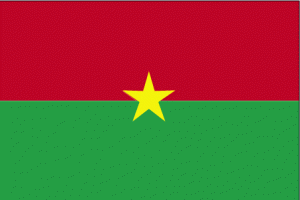 |
|
3. Cape Verde
Cape Verde, formally the Republic of Cape Verde, is a state encompassing an archipelago in the Atlantic Ocean, about 500 kilometers west of Cape Verde on the African mainland.
 |
|
4. Ivory Coast
Côte d’Ivoire is a republic in West Africa on the Atlantic Ocean bordering Burkina Faso, Ghana, Guinea, Liberia and Mali. The country is a former French colony and the country is a successful football nation.
 |
|
5. The Gambia
The Gambia, formally the Republic of the Gambia, is a state in West Africa on the Atlantic, bordering Senegal, which besides the coastline surrounds the country. The Gambia is the smallest state on the surface on the African continent.
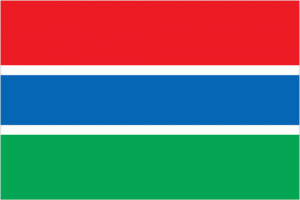 |
|
6. Ghana
Ghana, formally the Republic of Ghana, is a republic in West Africa. The country borders Côte d’Ivoire to the west, Burkina Faso to the north, Togo to the east and the Gulf of Guinea to the south.
 |
|
7. Guinea
Guinea, formally the Republic of Guinea, is a state in West Africa. Guinea is located on the Atlantic coast between Guinea-Bissau and Sierra Leone, and borders Senegal and Mali to the north, Côte d’Ivoire to the east and Liberia to the south.
 |
|
8. Guinea-Bissau
Guinea-Bissau, formally the Republic of Guinea-Bissau, is a state in West Africa with a coast to the Atlantic. The country, the former Portuguese colony of Portuguese Guinea, borders Senegal to the north, Guinea to the south and east.
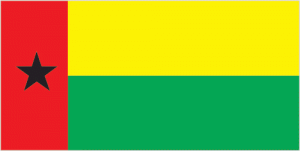 |
|
9. Liberia
Liberia, formally the Republic of Liberia, is a state in West Africa on the Atlantic coast, bordering Guinea, Sierra Leone and the Ivory Coast. Liberia is Africa’s oldest republic and its second oldest independent state after Ethiopia.
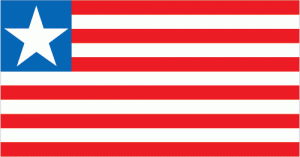 |
|
10. Mali
Mali, formally the Republic of Mali, is a coastal state in West Africa. Mali, the seventh largest country in Africa, borders Algeria to the north, Niger to the east, Burkina Faso and Côte d’Ivoire to the south, Guinea to the southwest and Senegal and Mauritania to the west. The population amounted to 14.5 million residents at the 2009 census.
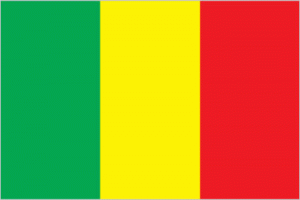 |
|
11. Mauritania
Mauritania, formally the Islamic Republic of Mauritania, is a state in northwestern Africa bordering Algeria, Mali, Senegal, Western Sahara and the Atlantic. The country also borders Morocco since February 27, 1976, when Morocco occupied Western Sahara.
 |
|
12. Niger
Niger, formally the Republic of Niger, is a state in the interior of West Africa, bordering Algeria, Benin, Burkina Faso, Libya, Mali, Nigeria and Chad. The country is named after the Niger River, which flows through the southwestern corner of the area.
 |
|
13. Nigeria
Nigeria, formally the Federal Republic of Nigeria, is a country in West Africa consisting of thirty-six states and its so-called Federal Capital Territory, Abuja. Nigeria is Africa’s most populous country and the seventh most populous country in the world.
 |
|
14. Senegal
Senegal, formally the Republic of Senegal, is the westernmost state on the African continent, located on the Atlantic Ocean. The country borders the Gambia, Guinea, Guinea-Bissau, Mali and Mauritania.
 |
|
15. Sierra Leone
Sierra Leone, formally the Republic of Sierra Leone, is a state in West Africa. It borders Guinea to the north and Liberia to the south and the Atlantic Ocean to the west coast.
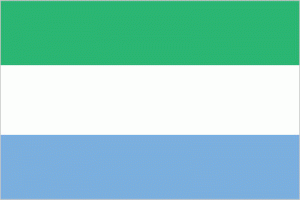 |
|
16. Togo
Togo, formally the Republic of Togo, is a state in West Africa bordering Ghana to the west, Benin to the east and Burkina Faso to the north. To the south, the country has a short coastal strip towards the Gulf of Guinea, where the capital Lomé is located.
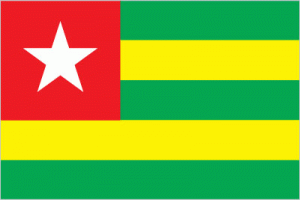 |
|
Countries in Western Africa by Population and Their Capitals
As noted above, there are sixteen independent countries in the Western Africa. Among them, the largest country is Nigeria and the smallest one is Cape Verde in term of population. The full list of Western African countries with capitals is shown in the table below, ranked by latest total population.
| # | Country | Population | Land Area (km²) | Capital |
| 1 | Nigeria | 200,963,599 | 910,768 | Abuja |
| 2 | Ghana | 30,280,811 | 227,533 | Accra |
| 3 | Côte d’Ivoire | 25,823,071 | 318,003 | Yamoussoukro |
| 4 | Niger | 22,314,743 | 1,266,700 | Niamey |
| 5 | Burkina Faso | 20,870,060 | 273,602 | Ouagadougou |
| 6 | Mali | 19,973,000 | 1,220,190 | Bamako |
| 7 | Senegal | 16,209,125 | 192,530 | Dakar |
| 8 | Guinea | 12,218,357 | 245,717 | Conakry |
| 9 | Benin | 11,733,059 | 114,305 | Porto-Novo |
| 10 | Sierra Leone | 7,901,454 | 71,620 | Freetown |
| 11 | Togo | 7,538,000 | 54,385 | Lome |
| 12 | Liberia | 4,475,353 | 96,320 | Monrovia |
| 13 | Mauritania | 4,077,347 | 1,025,520 | Nouakchott |
| 14 | Gambia | 2,347,706 | 10,000 | Banjul |
| 15 | Guinea-Bissau | 1,604,528 | 28,120 | Bissau |
| 16 | Cape Verde | 550,483 | 4,033 | Praia |
Map of West African Countries
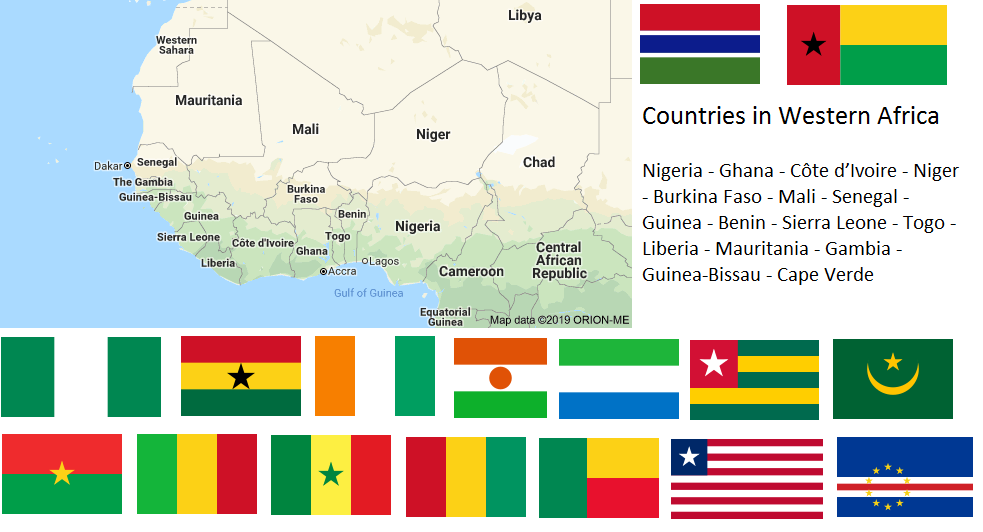
Brief History of Western Africa
Ancient Kingdoms and Empires
Western Africa, a region rich in culture and history, has been home to numerous influential kingdoms and empires. One of the earliest known civilizations in the region is the Nok culture, which flourished from around 1000 BCE to 300 CE in modern-day Nigeria. The Nok people are renowned for their terracotta sculptures and early ironworking technology, which laid the foundation for future societies in the region.
Ghana Empire
The Ghana Empire, also known as Wagadou, was one of the first major empires in Western Africa. Established around the 6th century CE, it thrived until the 13th century. Located in present-day southeastern Mauritania and western Mali, the Ghana Empire controlled significant trade routes and was renowned for its wealth, particularly in gold. The empire’s capital, Kumbi Saleh, was a major center of commerce and Islamic learning.
Mali Empire
The decline of the Ghana Empire paved the way for the rise of the Mali Empire in the 13th century. Founded by Sundiata Keita, the Mali Empire reached its peak under Mansa Musa (circa 1312-1337), one of the wealthiest individuals in history. Mansa Musa’s famous pilgrimage to Mecca in 1324 showcased the empire’s immense wealth and contributed to the spread of Islam. Timbuktu, a major city in the Mali Empire, became a renowned center of Islamic scholarship and trade.
Songhai Empire
The Songhai Empire succeeded the Mali Empire in the late 15th century. Under the leadership of rulers like Sunni Ali and Askia Muhammad, the Songhai Empire became one of the largest and most powerful empires in African history. Its capital, Gao, was a bustling hub of commerce and culture. The Songhai Empire controlled critical trans-Saharan trade routes, dealing in gold, salt, and other goods. The empire’s decline began in the late 16th century after a Moroccan invasion.
Trans-Saharan Trade and Islamic Influence
The trans-Saharan trade routes were vital to the prosperity of Western African empires. These routes facilitated the exchange of goods, ideas, and cultures between North Africa, the Middle East, and Western Africa. Gold, salt, and slaves were among the primary commodities traded. The introduction and spread of Islam played a significant role in shaping the region’s culture, education, and political structures. Islamic scholars and traders established learning centers and mosques, contributing to the region’s intellectual and religious development.
European Exploration and the Slave Trade
European contact with Western Africa began in the 15th century with Portuguese explorers like Prince Henry the Navigator, who sought new trade routes and sources of gold. The Portuguese established trading posts along the coast, which soon became hubs for the transatlantic slave trade. Over the next few centuries, millions of Africans were forcibly taken from Western Africa to the Americas, resulting in significant social and economic disruption.
Colonial Period
The 19th century saw the intensification of European colonization in Western Africa, marked by the Berlin Conference of 1884-1885, where European powers divided Africa into colonies. France, Britain, Germany, and Portugal established control over various parts of Western Africa, leading to profound changes in the region’s political, social, and economic landscape.
Colonial rule brought infrastructural development but also exploitation and resistance. The French controlled large areas, including present-day Senegal, Mali, Burkina Faso, and Ivory Coast. The British established colonies in Nigeria, Ghana, Sierra Leone, and The Gambia. Germany and Portugal also claimed territories in the region.
Independence Movements
The mid-20th century was a period of intense struggle for independence in Western Africa. The end of World War II and the growing demand for self-determination led to decolonization efforts across the continent. Ghana, under the leadership of Kwame Nkrumah, became the first sub-Saharan African country to gain independence in 1957. This achievement inspired other nations in the region to seek freedom from colonial rule.
By the 1960s, most Western African countries had gained independence. Leaders like Nnamdi Azikiwe in Nigeria, Ahmed Sékou Touré in Guinea, and Léopold Sédar Senghor in Senegal played pivotal roles in their countries’ independence movements. However, the post-independence period was marked by significant challenges, including political instability, military coups, and civil conflicts.
Post-Independence Challenges and Developments
The post-independence era in Western Africa has been characterized by both progress and setbacks. Many countries faced difficulties in establishing stable governance, leading to periods of authoritarian rule, economic challenges, and social unrest. Civil wars in countries like Liberia, Sierra Leone, and Ivory Coast had devastating effects on their populations and economies.
Despite these challenges, Western Africa has made significant strides in recent decades. Regional organizations like the Economic Community of West African States (ECOWAS) have played crucial roles in promoting economic integration, peace, and stability. Economic growth in countries like Nigeria, Ghana, and Senegal has been driven by sectors such as oil, agriculture, and services.
Contemporary Issues and Future Prospects
Today, Western Africa faces numerous challenges and opportunities. Political instability, corruption, and economic inequality remain significant issues. Additionally, the region is grappling with security threats from extremist groups in the Sahel and the impacts of climate change, which affect agriculture and livelihoods.
However, Western Africa also has immense potential. The region’s young and dynamic population is increasingly engaging in entrepreneurship, technology, and activism. Efforts to improve governance, education, and infrastructure are essential for sustainable development. The rich cultural heritage, coupled with the resilience and creativity of its people, offers a promising future for Western Africa.













































